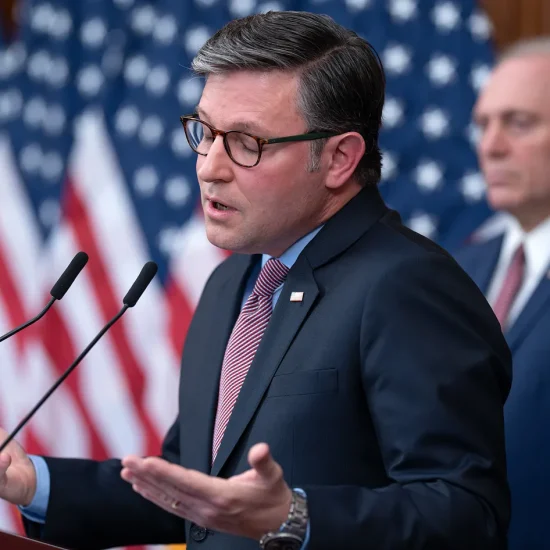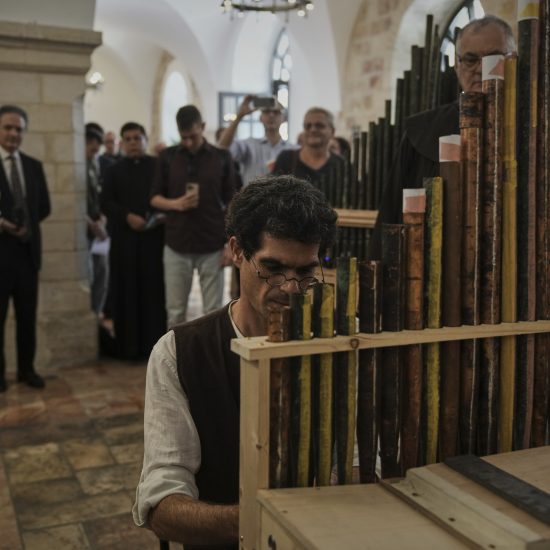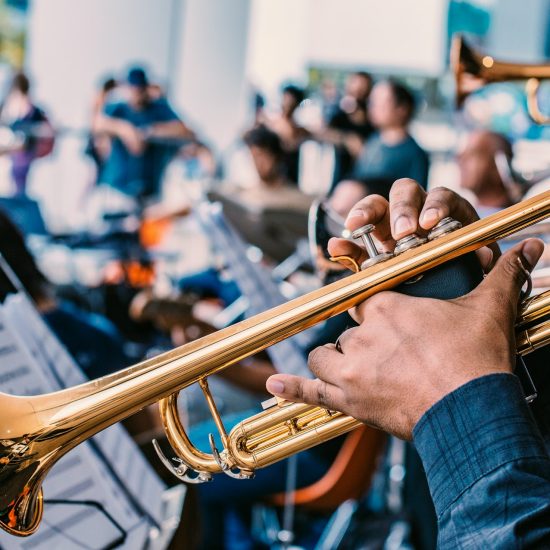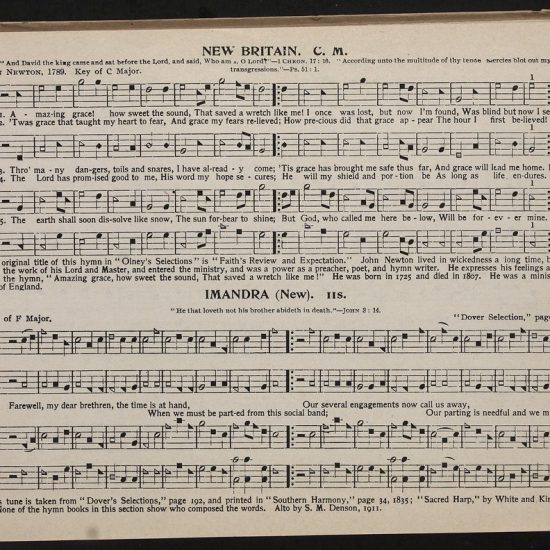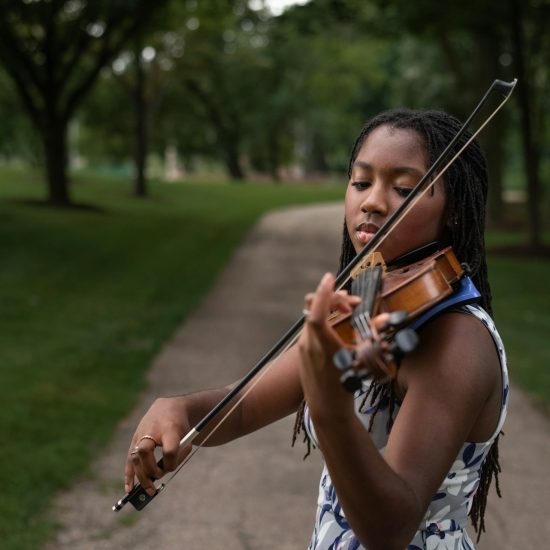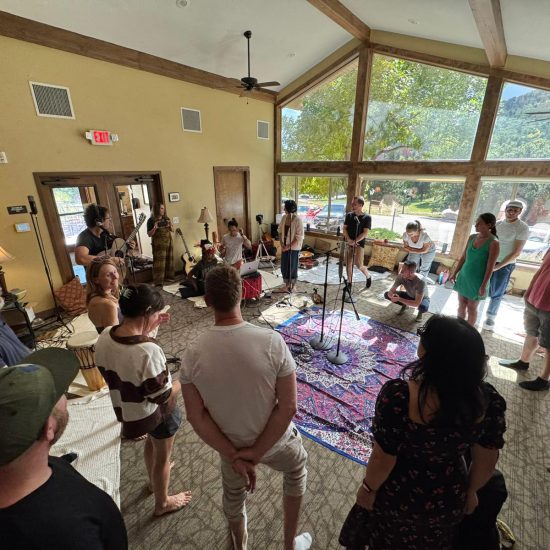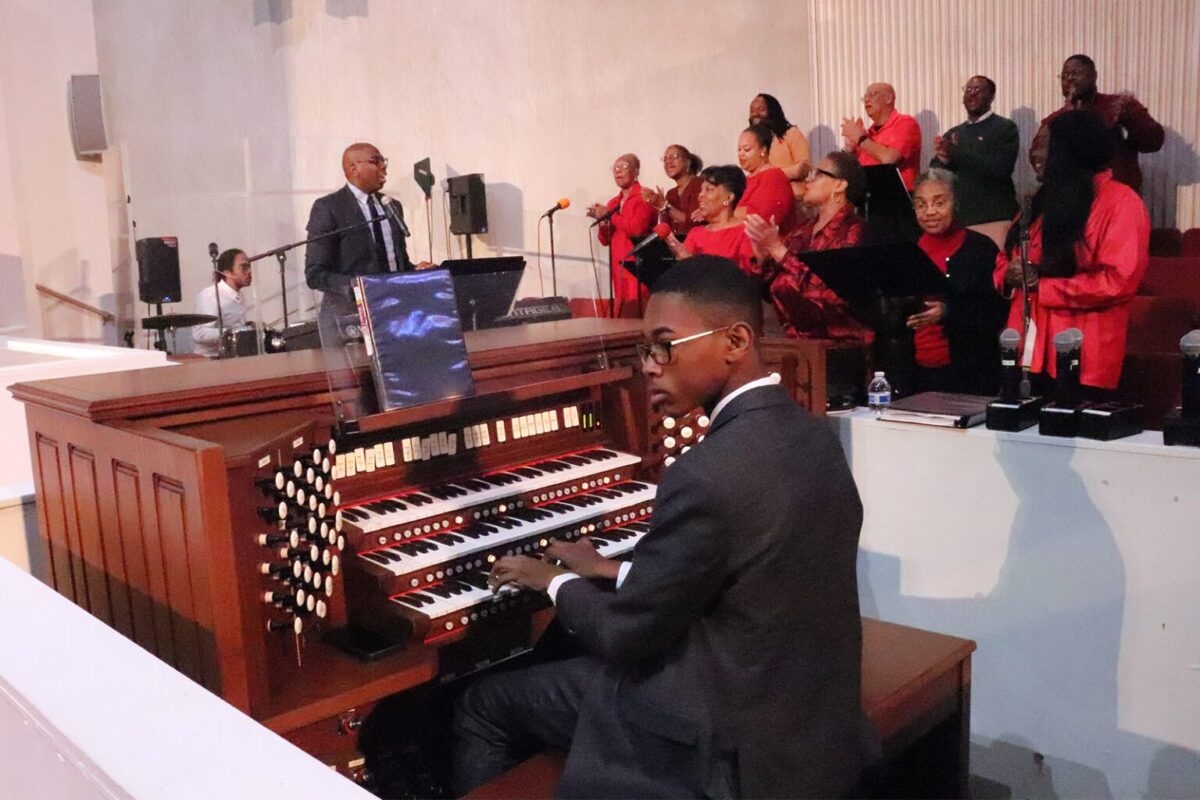
WASHINGTON (RNS) — Storeé Denson settled onto the organ bench at Nineteenth Street Baptist Church, a historic Black church a few miles from the White House, placing his hands on the electronic instrument’s manuals, his feet on its pedals, ears attuned to the choir he accompanies on Sunday mornings.
Like any other organist, Denson has been playing and preparing for numerous services in the weeks before Christmas. He warmed up for the season in November when he got the chance to play the august instrument at the Naval Academy Chapel in Annapolis, Maryland, at a “Pedals, Pipes and Pizza” event sponsored by the local chapter of the American Guild of Organists.
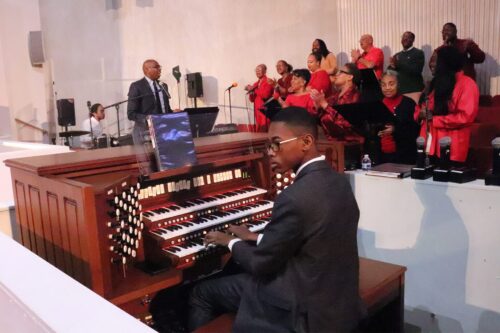
Storeé Denson accompanies the Nineteenth Street Baptist Church choir in Washington, D.C., Dec. 10, 2023. (RNS photo/Adelle M. Banks)
“I always wanted to play it,” he said of the organ in the monumental chapel at the academy. “That was one on my checklist.”
As he’s done with many other of his accomplishments at the keyboard, Denson, who is 14, checked off that item early. He is one of a small corps of young musicians who took to the organ at a young age, providing promise at a time when the number of instruments and the professionals who play them are in decline. They’ve become modern-day evangelists for the instrument that is more than 2,000 years old.
“I believe if more people start to realize that the organ can be used in contemporary worship, I think we will have an increase of organists,” said Denson, a ninth grader who also sings tenor in the chamber choir and plays piano in the jazz band at his Catholic high school across the Maryland state line.
On the second Sunday in Advent, he accompanied the Nineteenth Street choir as it sang Richard Smallwood’s setting of “Psalm 8” (“Oh, Lord, how excellent is thy name”) as well as “Jesus, the Light of the World.”
Denson, whose parents are both ministers, has been studying organ since he was 9 and credits organists at various Baptist churches for introducing him to the instrument and teaching him to play.
Some organists who start at an early age are veterans of the American Guild of Organists’ “Pipe Organ Encounters” programs, which bring young people to hear and play organs at nearby houses of worship and universities over the course of a few days to learn about the instrument. The program includes their first year of membership in the organists’ guild.
Scott Thumma, director of the Hartford Institute for Religion Research, said data from the Faith Communities Today studies shows a decline in organ use, with fewer respondent congregations reporting that their organ is played “often and always” and more saying “never” over time.
The American Guild of Organists’ current total membership is 11,516, including professional organists, people who play the instrument as an avocation, and those who just like the organ. A decade ago, there were about 17,000 members and the group reached its apex of about 20,000 in the 1990s.
Eric Birk, the AGO’s staff liaison to the Pipe Organ Encounters program, said the AGO attributes the drop to the deaths of organists who were baby boomers or members of older generations and to the downward demographic shifts in worship attendance.
Nevertheless, Emily Amos, who runs the AGO’s committee for young organists, said she thinks organs are bound to interest some young people.
“I mean, it’s loud, it’s massive, it’s got cool gadgets,” said Amos, 21, who is pursuing a master’s degree in organ performance at Rice University’s Shepherd School of Music. “It’s got everything that you would want to try out.”
Potential organists may not always find their way to the instrument via churches, said Amos, who has played the famous Wanamaker organ at Macy’s Philadelphia.
“If young people aren’t as interested in going to church or fewer young people are going to church, we need to think, where are they going and how can we get the organ to them there?” said Amos, who is also an organ scholar, or apprentice organist, at St. Paul’s United Methodist Church in Houston. “Because even if, say, they find the organ somewhere else, they may end up in a church.”
Amos, who favors Duruflé’s “Prelude and Fugue on the Name Alain,” hosts a holiday party via Zoom for organists under 30, where they play games, build camaraderie, and share “horror stories” from the Christmas season — Advent wreaths catching fire during a service and ciphers (stuck pipes that sound at unwanted times) — and commiserate about the grueling schedules at this time of year.
“There was one Christmas Eve where I played three different services at two different churches, so I had to race from one to the other, then go eat, take a nap, and then come back for the midnight,” said Amos, a Roman Catholic who plans to play at St. Paul at some of this year’s five services and sing in the choir at the others.
Birk said the number of young organist members — defined as younger than 30 — in the AGO totaled 863 in November.
Beyond the organist guild’s efforts, others are hoping to inspire young artists by example. The Diapason magazine, dedicated to church music, has a biennial “20 under 30” list of young people known for performing on the organ and harpsichord or building the instruments.
Peter Scheessele, a 10th grader in Corvallis, Oregon, helps his mother, Erin, run Orgelkids USA, a nonprofit that seeks to literally build interest in the instrument by distributing miniature pipe organ kits that allow children and adults to build and then play their own organs. Designed by a Dutch company, the U.S. kits are created by craftspeople in Oregon. More than two dozen organizations, mostly churches and AGO chapters, have commissioned them at $7,000 apiece.
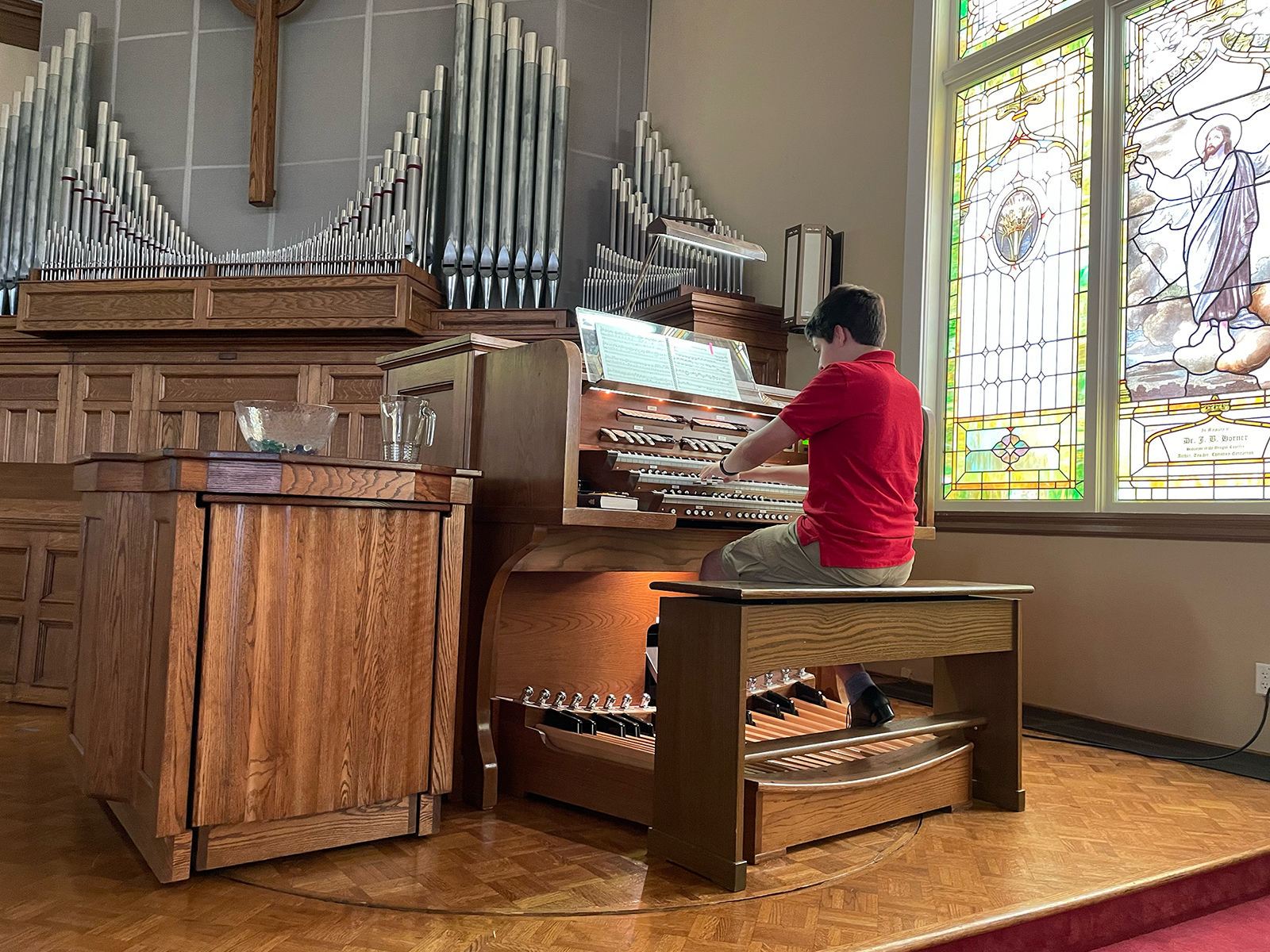
Peter Scheessele plays an organ in Corvallis, Ore. (Courtesy photo)
“I like to show them how the whole thing goes together,” Peter Scheessele said of the children and teens who attend Orgelkids demonstrations at churches and conventions. The kits contain 133 interlocking wood pieces that fit together without glue or screws. “And then they love the moment when it starts to play and they’re able to play it.”
Jim Roman, the organist and artist-in-residence at St. Luke’s United Methodist Church in Houston, says his church has the sole Orgelkids kit in Texas. He builds it with the church’s day school students at least once a year and holds camplike sessions with older children in the summer.
“Organists today need to be proactive about getting the instrument in front of people, especially since fewer people attend church now and get exposed to it as a result,” he said in an email.
“We can’t just hope that people will pay attention on Sunday mornings or randomly decide to show up to a concert and suddenly develop an interest,” said Roman, 32.
Scheessele, 15, plays a full-size organ at his own congregation, First Congregational United Church of Christ in Corvallis. He also recently performed a prelude and fugue by Vincent Lübeck at a local Presbyterian church whose organ has often sat silent.
On Christmas Eve, Scheessele hopes to play variations on a German Christmas carol about Joseph and Mary, part of a grander range of organ music he and other young organists say they prefer to play.
“I think the organ is a very interesting instrument — very complex — and I feel like it’s not represented as well as it should be in society,” he said. “Often, the only time you would hear it in a movie would be dark, foreboding music when that’s not all that the organ can provide,” he said.
“There’s a huge range of repertoire across the country that’s written for organ,” he added. “And I do like to play it all.”

